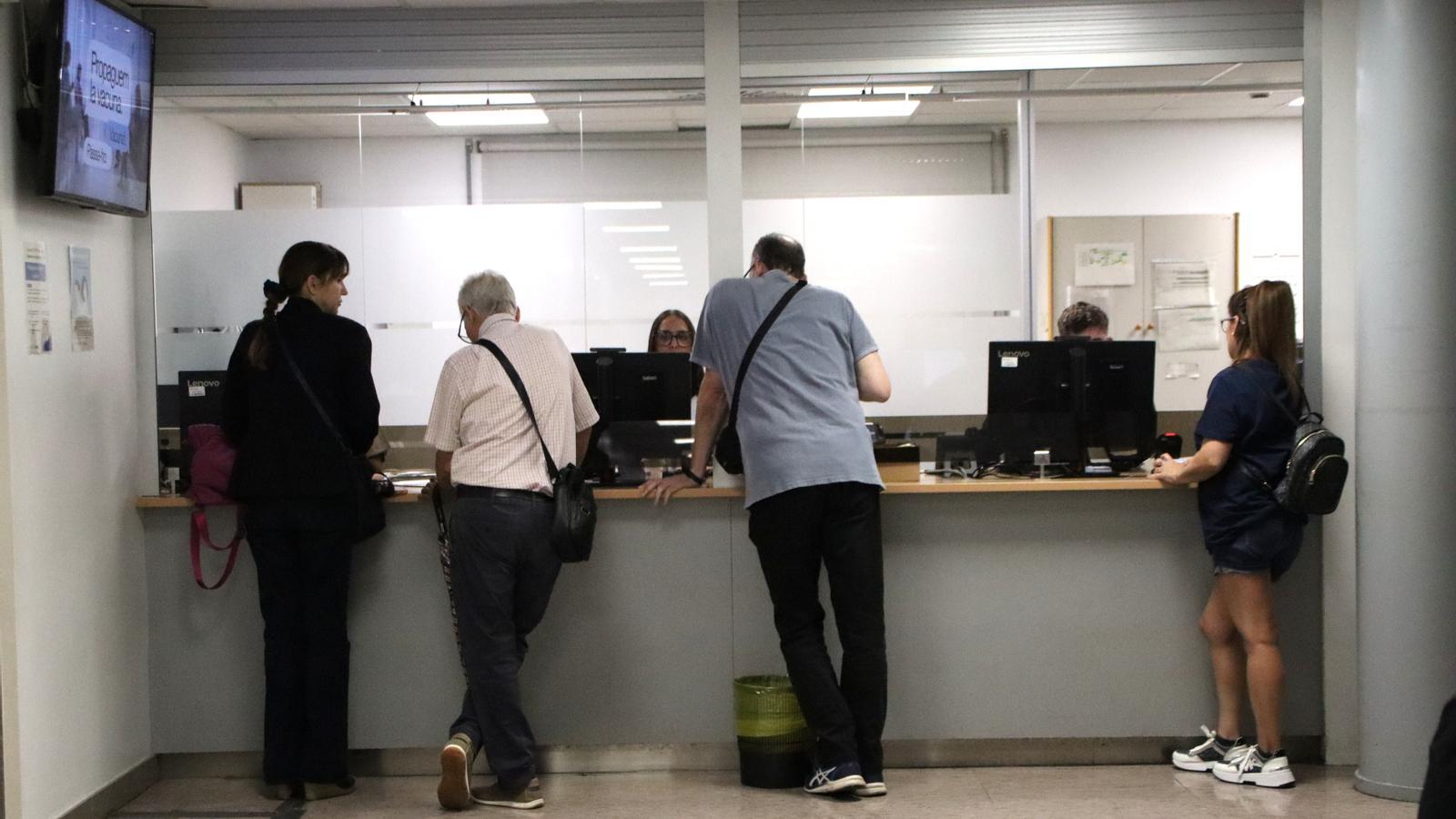The bill for the Integrated Social and Health Care Agency of Catalonia is entering its final phase of parliamentary processing and should reach the plenary session in the coming months. "The law must allow for these to be more than just experiments, but rather full coverage of the dependent population," stated the Minister of Social Rights, Mònica Martínez-Bravo.
The single window for social and health services will reach one in four dependents by the end of the year.
A pilot test in Santa Coloma estimates that the integration reduces emergency room visits and hospitalizations by about 40%.


Santa Coloma de GramanetBetween residential and home care, the overwhelming majority of Catalans (93%) would prefer to receive care at home, according to the latest Òmnibus survey. More chronic, neurodegenerative, oncological, and mobility-related illnesses associated with aging, greater loneliness, and greater economic hardship—coupled with demographic predictions that indicate that in less than a decade, one in four inhabitants of the country will be over 65—reveal the need for healthcare and social resources.
Since 2018, the Santa Coloma Primary Care Center (CAP) has implemented an integrated care plan that combines healthcare and social care, with assistance for processing services and benefits, and temporary home support. According to the study presented this Thursday at the Departments of Health and Social Rights, this model has significantly reduced hospitalizations and length of stay in emergency residential settings for dependent individuals. Specifically, it has achieved a 37.2% decrease in emergency room visits and a 38.3% decrease in hospitalizations. In short, these people decompensated less and spent more time at home.
The data include procedures performed on 264 people between May 2018 and December 2021. 91% were living at home at the time of the intervention, and 9% were in nursing homes. They had an average age of 83 years, and four out of five had multiple pathologies: more than half (55%) had serious chronic conditions and a high risk of hospital readmission, 20% had very limited mobility, and 19% had very advanced illnesses.
All of them were followed for six months, and although one in four died during this period, it was found that the use of healthcare resources was lower: if initially all participants totaled 182 emergency room visits and 130 hospital admissions, six months later it was 144 and 89. Furthermore, the average total cost allocated to services was reduced by half (-46%).
"For us, placing people at the center of all care in order to make their life project dignified is a natural, habitual, and fair practice," said the mayor of Santa Coloma, Mireia González, who emphasized that the municipal government has increased the budget by more than 50 percent to continue providing this professional service.
Initial indicators
The Santa Coloma data are relevant because they are the first indicator of the impact of the service coordination that the future Integrated Social and Health Care Agency should guarantee. This is a long-standing request from workers and dependents to avoid duplication and better coordinate services. Its need was recognized during and after COVID-19. Simply put, it will be a kind of one-stop shop between primary care centers, nursing homes, and social services.
"The patient must be at the center of decisions, not behind the medical records. The experience of Santa Coloma shows us that working in an integrated manner reduces hospital stays and admissions, and increases time at home. This is the model we must pursue," stated the Regional Minister of Health, Olga Pané. In a joint address with the Regional Minister of Social Rights, Mònica Martínez Bravo, she announced that the new social-health model will reach 25% of the Catalan population by the end of the year, increasing from 400,000 people served to more than 1.5 million. However, it will be necessary to wait until at least 2026 or 2027 for the coordinated service to cover everyone with a health card.
140,000 fewer visits to the CAP
The regional councilors have announced the incorporation of the Santa Coloma practice into the network, as well as five new home care pilot projects. All of these projects should allow the system to be prepared before the Agency's deployment, and, as Pané has anticipated, a total of eighteen are expected by the end of the year. The six now being incorporated will be deployed in the Alt Empordà region and in the municipalities of Hospitalet de Llobregat, Mataró, Sant Andrés de la Barca, Sant Boi, and Santa Coloma de Gramenet, and are in addition to the eight already operational (Amposta, El Prat, Osona, Manresa, and Garro).
The unique feature of this model is that each beneficiary has a unique care plan shared by health and social services, as well as a referral professional who will coordinate their care, taking into account their needs for these public resources.
The change in model will also entail a technological boost, with digital tools that allow cross-access to clinical and social information. This model took a significant leap forward in August 2024, when micro-viewers were implemented, allowing health and social services professionals to share clinical and social information securely and directly. This tool prevents people from having to travel to primary care centers (PCCs) to obtain medical reports for dependency assessments, as the responsible teams can access them directly. This represents a saving of approximately 140,000 visits to PCCs annually.
